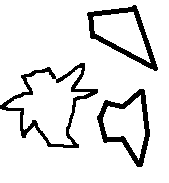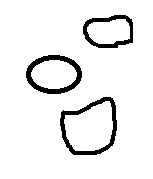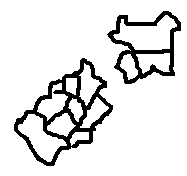This set of Casting, Forming and Welding Multiple Choice Questions & Answers (MCQs) focuses on “Molding Sands”.
1. Which of the following is not a source of moulding sand?
a) Sea
b) Lakes
c) Desert
d) Forests
View Answer
Explanation: There are a variety of soils which can be found in forests. But the soils found there cannot be used for casting purposes. Hence forests are not a source for finding moulding sand, whereas sea, lakes and deserts are a source of finding them.
2. Which of the following is not a type of moulding sand?
a) Red sand
b) Natural sand
c) Synthetic sand
d) Loam sand
View Answer
Explanation: Red sand is not counted among the moulding sands, whereas natural sand, synthetic sand and loam sand are various other types of moulding sand, which can be effectively used for casting processes.
3. What is the percentage composition of clay in natural sand?
a) 22-31%
b) 3-10%
c) 5-20%
d) 18-29%
View Answer
Explanation: In natural sands, the percentage composition of clay is approximately 5-20% as the binding material. If the percentage composition is less than that like 3 to 10%, then the binding action will not take place effectively.
4. What is the percentage composition of water in natural sands?
a) 2-4%
b) 5-8%
c) 6-9%
d) 10-13%
View Answer
Explanation: Water is an important agent used in sands, but its composition should be inside the desired range. The percentage composition of water in natural sands is around 5-8% for mixing before making a mould.
5. What is mixed with natural sand to make it semisynthetic sand?
a) Bentonite
b) Barelelne
c) Cubane
d) Prismane
View Answer
Explanation: The addition of a material like bentonite in its sand form, is because of the need to enhance the sand properties. Bentonite is mixed with natural sand to make it semisynthetic sand and thus improving its properties.
6. Which sand is used for casting cast irons and non-ferrous metals?
a) Loam Sand
b) Natural Sand
c) Synthetic Sand
d) Refractory sand grain
View Answer
Explanation: For casting iron and non-ferrous metals, natural sand is used. The loam sand, the synthetic sand and the refractory grain sand do not play any role in casting them.
7. Natural sands are economical than synthetic sands.
a) True
b) False
View Answer
Explanation: In natural sands, the amount of availability of it is quite abundant, also, there need not be much of further operations on the natural sands unlike synthetic sands. Natural sands involve a much lesser cost as compared to synthetic sands, as lesser control is needed there.
8. What is the amount of clay content in Loam sand?
a) 30%
b) 40%
c) 50%
d) 60%
View Answer
Explanation: Clay content in loam sand is relatively more than that of in natural sand. Also, the amount of humid content or the levels of water too in loam sand would be differing similarly. The clay content in loam sand is around 50%.
9. Which sand is used for making ferrous and non-ferrous alloys?
a) Natural sand
b) Synthetic sand
c) Loam sand
d) Refractory sand grain
View Answer
Explanation: Natural sands are used for casting ferrous and non-ferrous metals while synthetic sands are used for casting ferrous and non-ferrous alloys.
10. A general loam sand mixture contains how many volumes of silica?
a) 10
b) 20
c) 30
d) 40
View Answer
Explanation: In general loam sand, the moisture is found to contain a decently good amount of clay content in it. A general loam sand mixture contains 20 volumes of silica, the moisture of 20% and manure 1 volume.
11. The figure below shows which foundry sand grain shape?

a) Round
b) Sub angular
c) Angular
d) Compound
View Answer
Explanation: Foundry sand grain is categorised into four types which are, round type, sub-angular type, angular type and compound type. This figure here, depicts angular sand grain.
12. The figure below shows which foundry sand grain shape?

a) Round
b) Sub angular
c) Angular
d) Compound
View Answer
Explanation: None.
13. Round grain has higher permeability than angular grains.
a) True
b) False
View Answer
Explanation: Round grains do not have a better bond and possess lesser strength. Round grain has higher permeability than angular strength.
14. The figure below shows which foundry sand grain shape?

a) Round
b) Sub angular
c) Angular
d) Compound
View Answer
Explanation: None.
Sanfoundry Global Education & Learning Series – Casting, Forming and Welding.
To practice all areas of Casting, Forming and Welding, here is complete set of 1000+ Multiple Choice Questions and Answers.
If you find a mistake in question / option / answer, kindly take a screenshot and email to [email protected]
- Check Mechanical Engineering Books
- Practice Mechanical Engineering MCQs
- Apply for Metallurgical Engineering Internship
- Practice Metallurgical Engineering MCQs
- Check Casting, Forming and Welding I Books
